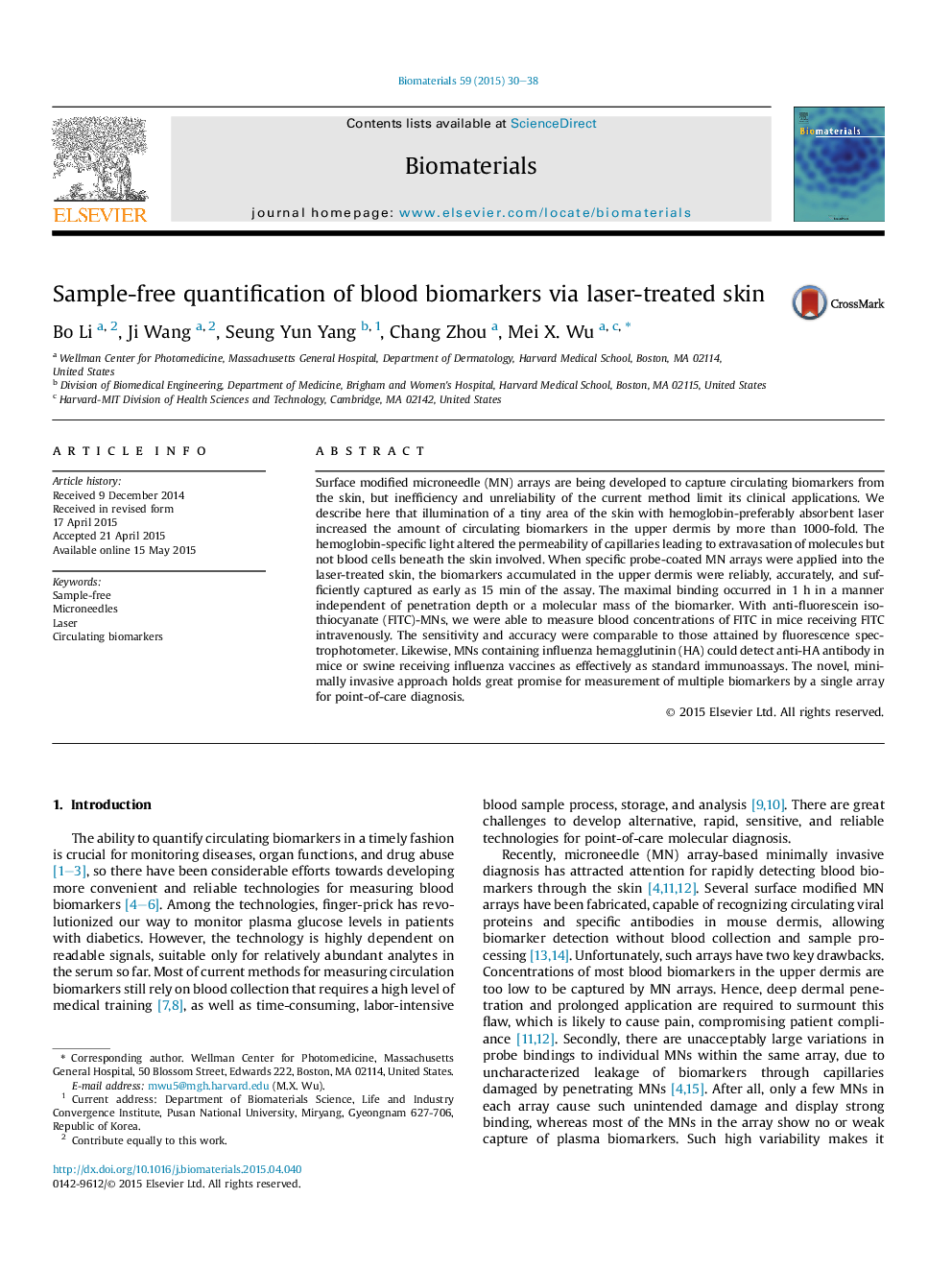| Article ID | Journal | Published Year | Pages | File Type |
|---|---|---|---|---|
| 6485657 | Biomaterials | 2015 | 9 Pages |
Abstract
Surface modified microneedle (MN) arrays are being developed to capture circulating biomarkers from the skin, but inefficiency and unreliability of the current method limit its clinical applications. We describe here that illumination of a tiny area of the skin with hemoglobin-preferably absorbent laser increased the amount of circulating biomarkers in the upper dermis by more than 1000-fold. The hemoglobin-specific light altered the permeability of capillaries leading to extravasation of molecules but not blood cells beneath the skin involved. When specific probe-coated MN arrays were applied into the laser-treated skin, the biomarkers accumulated in the upper dermis were reliably, accurately, and sufficiently captured as early as 15Â min of the assay. The maximal binding occurred in 1Â h in a manner independent of penetration depth or a molecular mass of the biomarker. With anti-fluorescein isothiocyanate (FITC)-MNs, we were able to measure blood concentrations of FITC in mice receiving FITC intravenously. The sensitivity and accuracy were comparable to those attained by fluorescence spectrophotometer. Likewise, MNs containing influenza hemagglutinin (HA) could detect anti-HA antibody in mice or swine receiving influenza vaccines as effectively as standard immunoassays. The novel, minimally invasive approach holds great promise for measurement of multiple biomarkers by a single array for point-of-care diagnosis.
Related Topics
Physical Sciences and Engineering
Chemical Engineering
Bioengineering
Authors
Bo Li, Ji Wang, Seung Yun Yang, Chang Zhou, Mei X. Wu,
